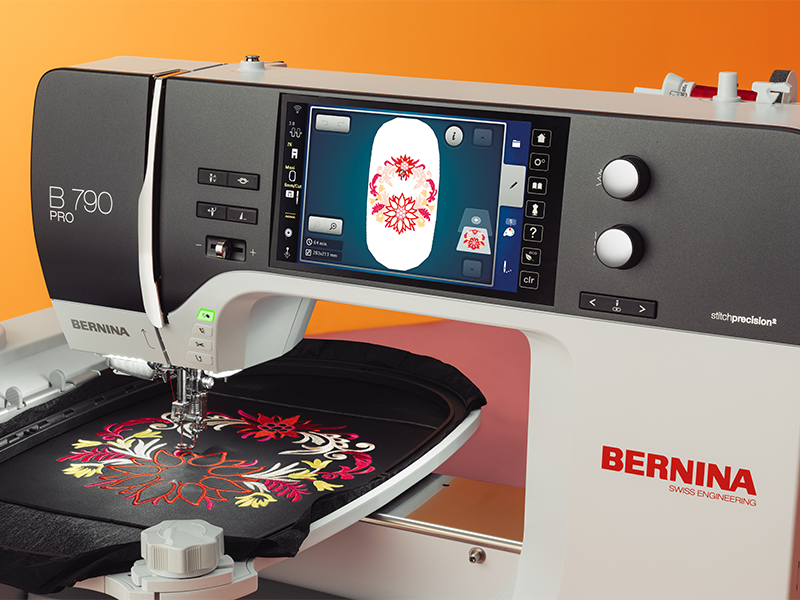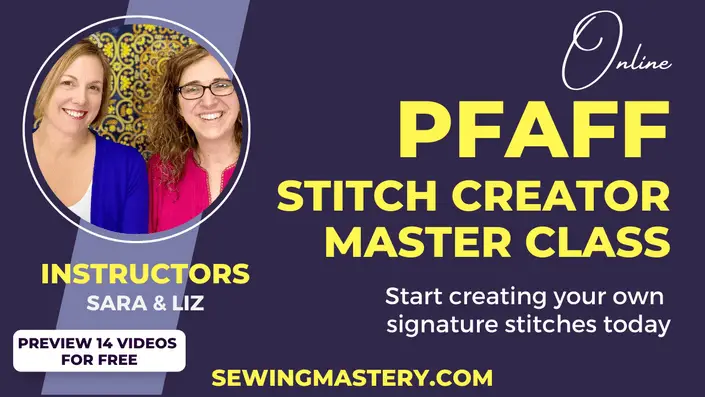To use sewing machines, thread the machine, select the stitch, place fabric under the presser foot. Make sure to adjust tension, stitch length, and press foot pedal carefully.
Sewing machines are versatile tools that help create beautiful garments and household items. Whether you are a beginner learning to sew or an experienced seamstress, understanding how to use a sewing machine is essential. By following a few simple steps, you can quickly start sewing your own creations.
This article will guide you through the basic process of using a sewing machine, from threading the machine to selecting the right stitch for your project. Let’s dive in and explore the exciting world of sewing machines!
Choosing The Right Sewing Machine
When it comes to Choosing the Right Sewing Machine, it’s crucial to consider your unique sewing needs.
Understanding Your Sewing Needs
Assess your sewing requirements to determine what features are essential for your projects.
Researching Sewing Machine Options
Compare various sewing machine models based on factors like stitch options, speed, and durability.
Mastering Basic Sewing Techniques
Threading The Machine
Begin by raising the presser foot and the needle to ensure smooth threading.
Insert the thread through the machine’s top and bottom guides properly.
Pull the thread gently to pass it through the needle eye for accurate threading.
Adjusting Tension And Stitch Length
Ensure the needle is in the highest position before adjusting the tension.
Balance the upper and lower thread tension for neat and durable stitches.
Adjust the stitch length as needed for different fabric types and designs.
Exploring Advanced Stitching Methods
When it comes to sewing, exploring advanced stitching methods can take your projects to the next level. Learning how to utilize different stitch patterns and work with specialty fabrics opens up a world of creative possibilities.
Utilizing Different Stitch Patterns
Different stitch patterns allow you to add texture and visual interest to your projects. Experiment with zigzag stitches for stretch fabrics, decorative stitches for embellishments, and overcasting stitches for finishing edges. Refer to your sewing machine’s manual for instructions on how to select and adjust these stitch patterns.
Working With Specialty Fabrics
Specialty fabrics such as silk, leather, and knits require specific techniques to produce professional-looking results. Use a ballpoint needle for knits, a Teflon foot for leather, and silky thread for silk to ensure smooth sewing. Adjust the presser foot pressure and stitch length according to the fabric type for optimal results.
Credit: sewing-mastery.teachable.com
Maintaining And Troubleshooting
Regular cleaning and maintenance of your sewing machine is essential to ensure its proper functioning and longevity. By taking good care of your machine, you can prevent common issues and keep it running smoothly for years to come. In this section, we will discuss the importance of regular cleaning and maintenance, as well as how to identify and fix common issues that may arise.
Regular Cleaning And Maintenance
Proper cleaning and maintenance of your sewing machine is crucial to keep it in optimal condition. Here are some simple steps you can follow:
- Begin by unplugging your sewing machine from the power source.
- Using a soft brush or a small vacuum cleaner attachment, gently remove any dust, lint, or loose threads from the machine’s exterior.
- Open the machine’s casing and carefully clean the bobbin area, needle plate, and feed dogs.
- Wipe the machine’s surface with a soft, lint-free cloth to remove any smudges or dirt.
- Check and clean the tension disks, as well as the thread path, to ensure smooth thread flow.
- Lastly, apply a small amount of sewing machine oil to the designated areas, as mentioned in the manufacturer’s instructions. This helps to lubricate the moving parts and reduce friction.
By following these steps regularly, you can prevent dirt and debris from accumulating, which can cause the machine to jam or operate improperly.
Identifying And Fixing Common Issues
Even with regular maintenance, sewing machines may experience problems from time to time. Here are a few common issues that you might encounter and how to fix them:
| Problem | Solution |
|---|---|
| The machine is skipping stitches | Check if the needle is bent or dull. Replace with a new needle. |
| The thread keeps breaking | Re-thread the machine, ensuring the thread is properly seated in the tension disks and the bobbin is wound correctly. |
| The machine is making strange noises | Check for loose screws or parts, and tighten if necessary. If the noise persists, consult the machine’s manual or contact a professional technician. |
| The stitches look uneven | Ensure the tension is properly adjusted according to the fabric you are using. Test on a scrap piece of fabric before sewing on your project. |
Remember, troubleshooting issues with your sewing machine should always be done with caution. If you are unsure about any repairs, it is best to consult a professional technician to avoid causing further damage to your machine.
Creating Professional-quality Projects
When it comes to sewing, there’s something incredibly satisfying about creating professional-quality projects. Whether you’re a beginner or an experienced seamstress, honing your skills and learning the ins and outs of your sewing machine can make all the difference. In this section, we’ll explore two essential aspects of sewing that can take your projects to the next level: understanding the importance of pressing and incorporating finishing techniques.
Understanding The Importance Of Pressing
Pressing is a crucial step in achieving professional-looking results. When you press your fabric, you are essentially using heat and steam to smooth out wrinkles, set seams, and create crisp edges. Regularly pressing your fabric throughout the sewing process can transform a handmade garment into something that looks like it came straight from a boutique.
Here are a few key reasons why pressing matters:
- Seam Perfection: Pressing your seams open or to one side not only helps them lie flat but also adds strength and structure to your project.
- Professional Finishing: Pressing can give your finished garment that polished touch, making it look like it was made by a seasoned pro.
- Accurate Measurements: By pressing your fabric before cutting, you ensure that it’s in its true state, allowing for more accurate measurements and better-fitting garments.
So how do you go about pressing your fabric? It’s simple:
- Choose the Right Temperature: Follow the fabric care instructions to determine the appropriate temperature for pressing. Too much heat can damage delicate fabrics, while insufficient heat may not give you the desired results.
- Use a Pressing Cloth: Some fabrics, like velvet or satin, may require extra protection. Place a clean cotton pressing cloth between the iron and the fabric to prevent any damage.
- Apply Pressure: Gently press down on the fabric with your iron, moving it in an up-and-down motion. Avoid sliding the iron back and forth, as this can stretch the fabric.
- Steam It Up: Steam can work wonders on stubborn wrinkles. If your fabric allows, use the steam setting on your iron to release those pesky creases.
Incorporating Finishing Techniques
The art of sewing doesn’t end with stitching the last seam. To truly elevate your projects and make them look professional, incorporating proper finishing techniques is essential. These finishing touches can add durability, aesthetic appeal, and a sense of pride to your handmade creations.
Here are some finishing techniques you should consider:
| Technique | Description |
|---|---|
| Zigzag or Overlock Stitch | Use this stitch along the raw edges of your fabric to prevent fraying. |
| French Seams | Create a clean, enclosed seam by sewing the wrong sides together, trimming the seam allowance, and sewing the right sides together. |
| Hemming | Give your garments a polished finish by hemming the raw edges. Options include single or double folded hems. |
| Topstitching | Add decorative or functional stitching on the outside of your garments to add structure and visual interest. |
Remember, incorporating finishing techniques not only improves the overall appearance and longevity of your projects but also helps you grow as a seamstress. So take the time to research and practice these techniques, and soon you’ll be creating professional-quality projects that you’ll be proud to show off!

Credit: maszynydoszycia.pl
Frequently Asked Questions On How To Use Sewing Machines
How Do I Thread A Sewing Machine?
To thread a sewing machine, start by placing a spool of thread on the spool pin and pulling the thread through the various guides and tension discs. Next, thread the needle and bring the thread under the presser foot. Finally, pull both threads under the presser foot and you’re ready to sew!
What Are The Different Types Of Stitches I Can Make With A Sewing Machine?
With a sewing machine, you can create a variety of stitches including straight stitch, zigzag stitch, buttonhole stitch, and decorative stitches. Each stitch has its own unique purpose and can be used for sewing different types of fabrics and projects.
Experiment with your machine to discover all the possibilities!
How Often Should I Clean And Maintain My Sewing Machine?
It is important to regularly clean and maintain your sewing machine to ensure optimal performance. Depending on usage, you should clean your machine after every project or at least once a month. This includes removing lint, oiling specific parts, and checking for any loose screws or belts.
Following the manufacturer’s instructions is vital for proper maintenance.
Conclusion
In short, knowing how to use a sewing machine opens up a world of creative possibilities. With the right knowledge and practice, you can master the art of sewing and create beautiful, personalized items. Embracing the tips and techniques discussed in this post will help you gain confidence and proficiency in using a sewing machine.
Keep stitching and enjoy the journey of sewing!


